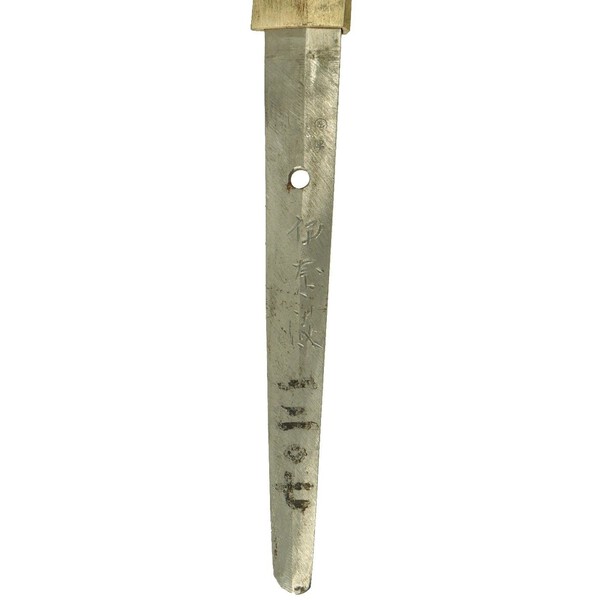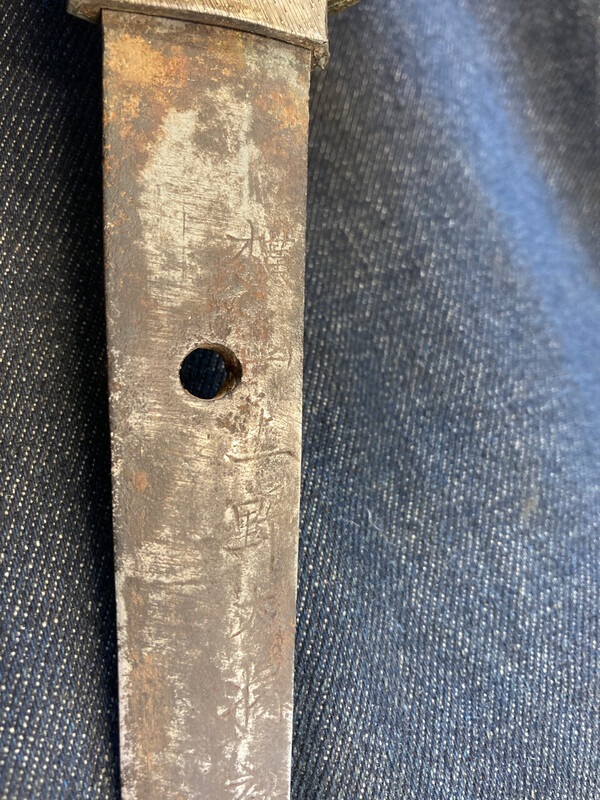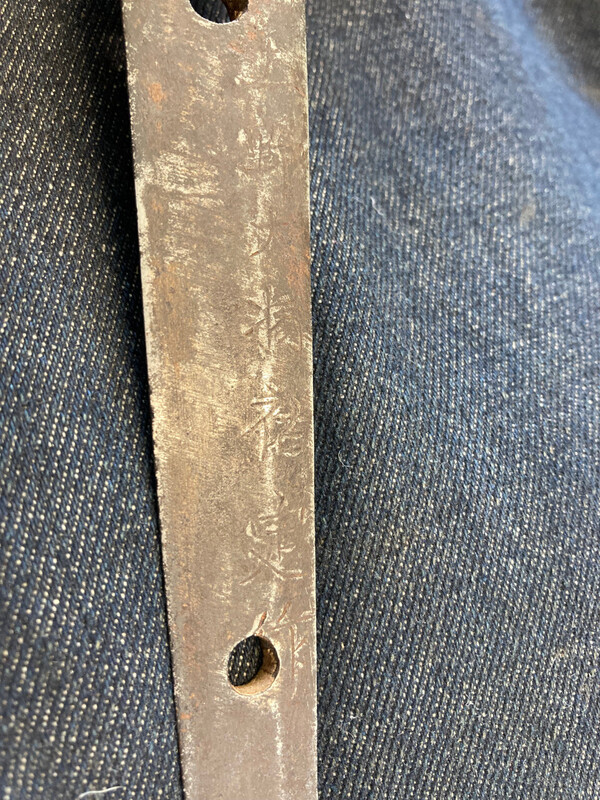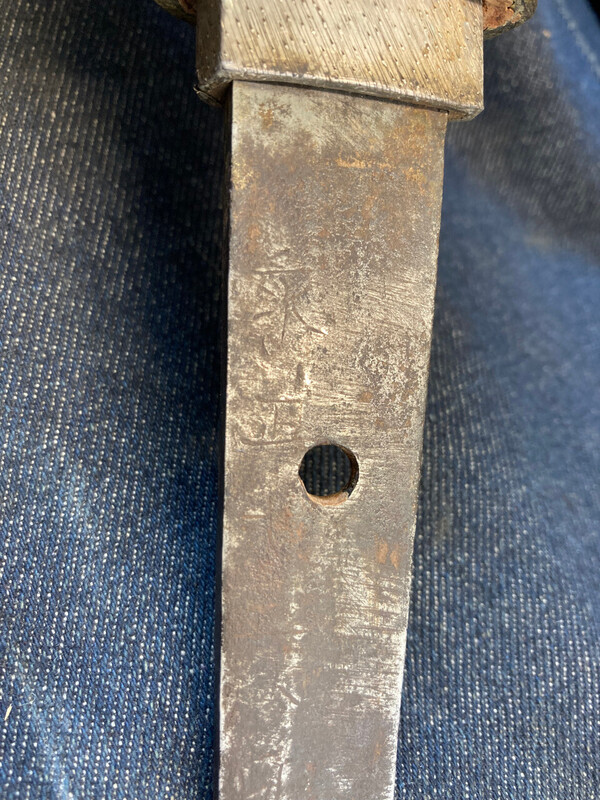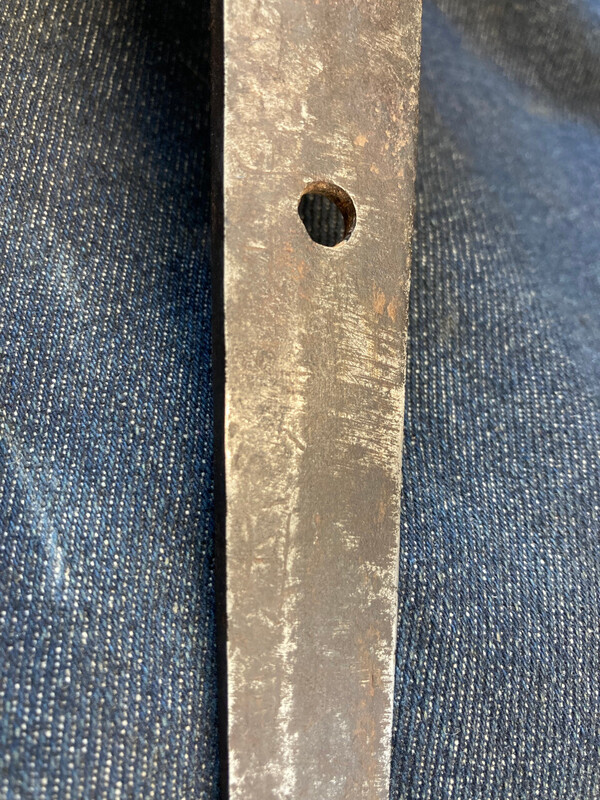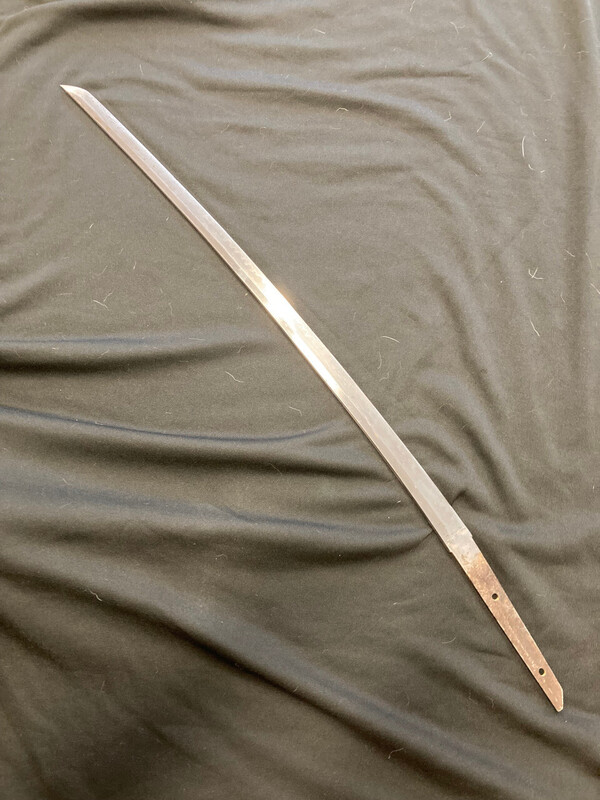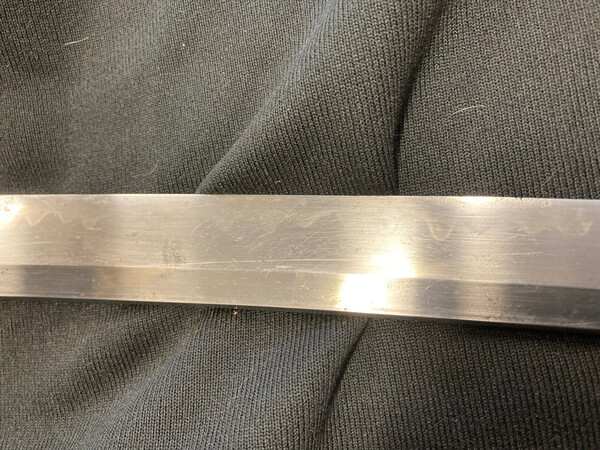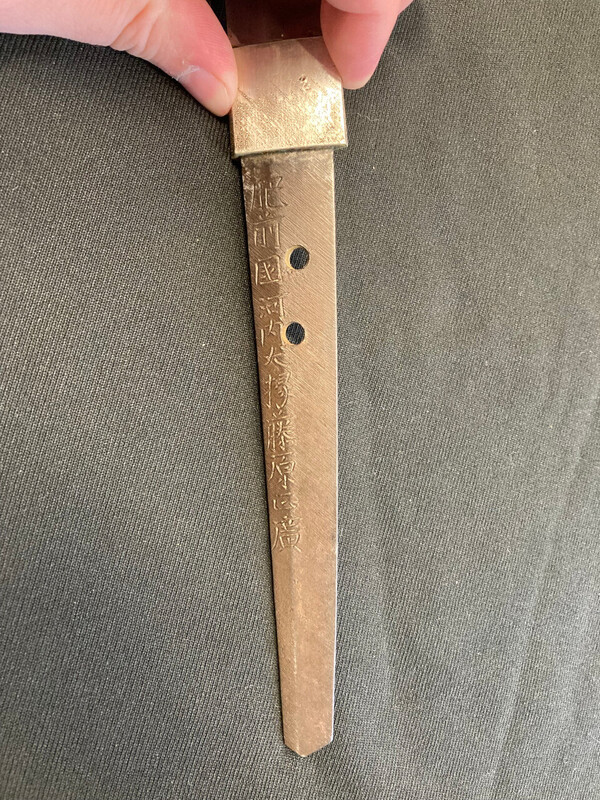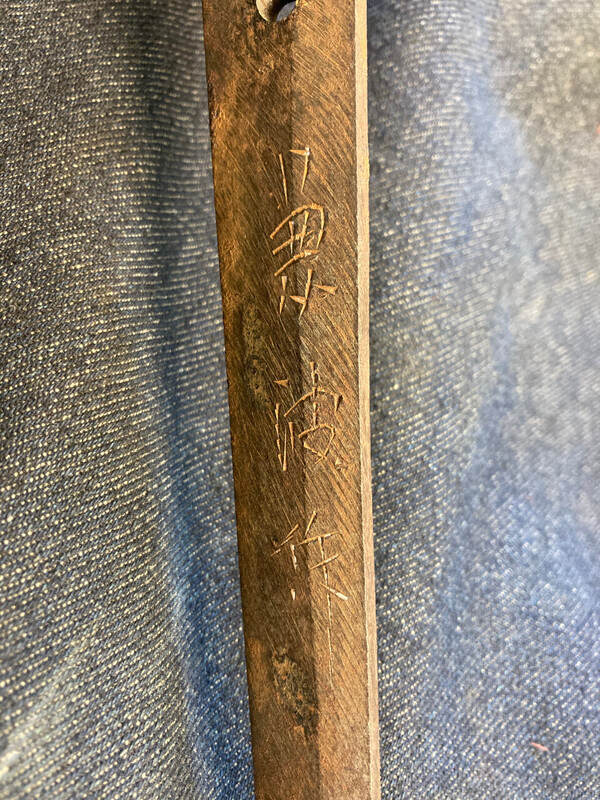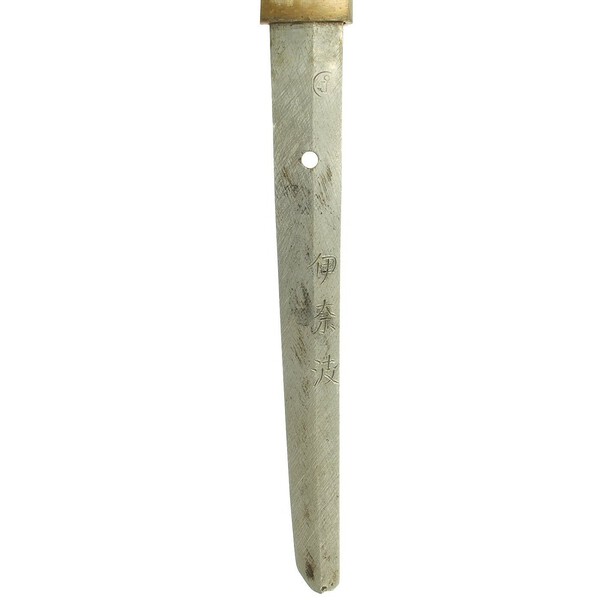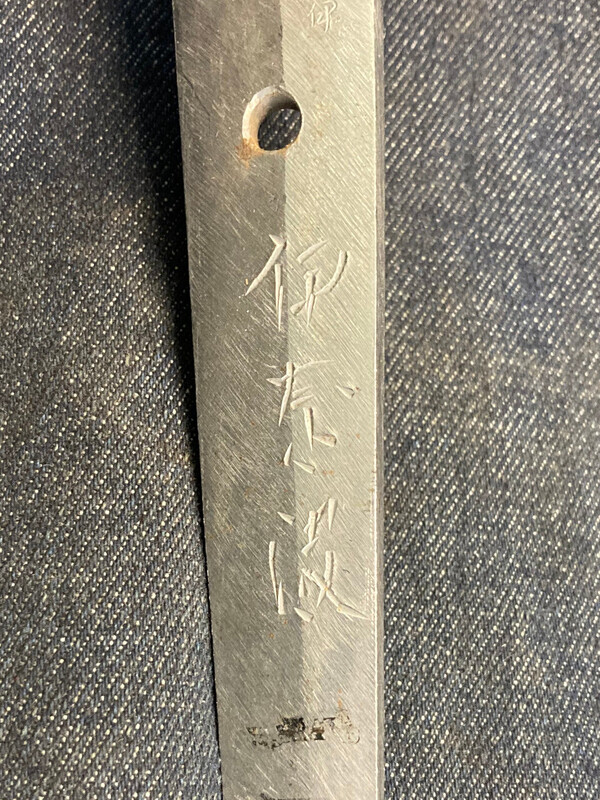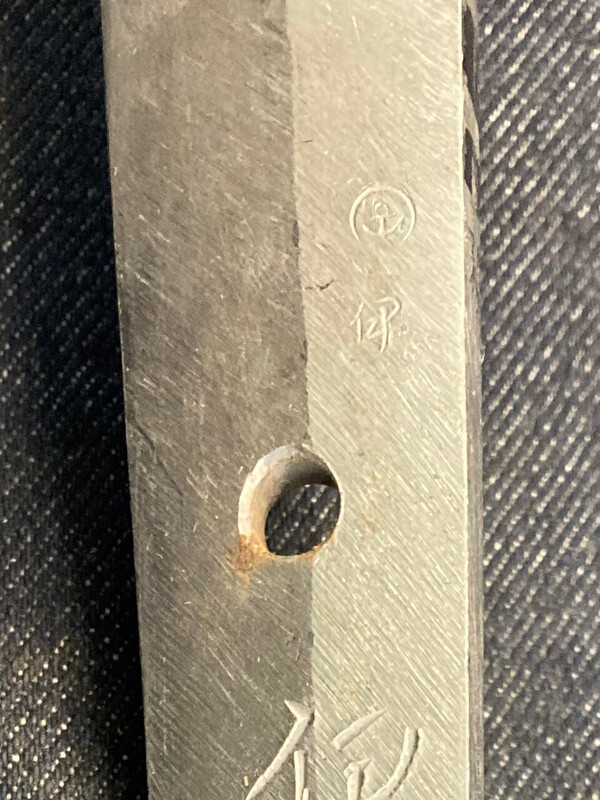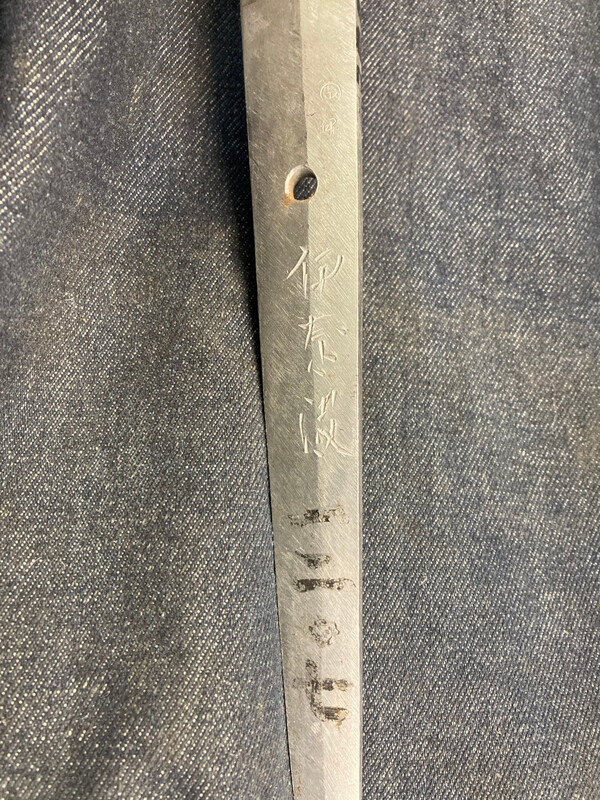
tbonesullivan
Members-
Posts
394 -
Joined
-
Last visited
Content Type
Profiles
Forums
Events
Store
Downloads
Gallery
Everything posted by tbonesullivan
-
A word about amateur polishing
tbonesullivan replied to Brian's topic in General Nihonto Related Discussion
I hate that people don't realize how much of an art form it is. I wouldn't want someone playing in an orchestra that had watched a few youtube videos. I play in a community orchestra, and even the people in that are expected to have a command of their instrument, which takes years of dedication and hard work. I work in the military antiques business, and the number of RUINED antiques that I have seen is enough to make many cry. I don't see how "polish the crap out of it" became the norm. I also have seen the tons of youtube "restoration experts" that have popped up, and they ALSO make my eyes bleed, even when they are doing something like an old screwdriver. There are definitely ones that know what they are doing, and are bringing great pieces of machinery back to a usable state. One I follow also has a machine shop outfitted with the correct tools needed to fix and repair these things, compared to the garage you see many of these "restoration" people working out of. And yes, we have gotten Nihonto, examples of which I have posted in the past, that were attacked by people with a buffer or a sharpening stone. Breaks my heart. We also get plenty of standard 20th Century Military Issue blades that have been hacked to bits by people who probably couldn't even sharpen an axe correctly. Anyway, back to playing with the Pillow Yari we just got in, which has a great polish already. -
Help Requested on Mei and Nengo
tbonesullivan replied to tbonesullivan's topic in Translation Assistance
Thanks so much! I honestly had never seen the 廿 character for 20 before. I would also agree on Masa 正 being the first character. The second, I know I've seen that before, I just can't remember which sword I looked at before has it. Maybe 久 HISA? -
This is what we've been told is a stainless steel Type 98, with a leather covered wood scabbard. The "signature" on the blade is a bit strange though, and looking at the usual Kanji charts I can only identify "本 金" in the Mei, which also is not on the usual side of the blade. It almost looks like a dedication, and the condition of the tang is pretty suspect. The date is normal except for the year number, which looks like some combination of 十 and another Character. Any help would be most appreciated. I'm stumped.
-
Well, this wasn't really what I was expecting when I got this sword, but the guy who buys things (not me) picked it up and they did say it was dated 1529, and it looks like it reads the following: MEI: 備 州 長 船 則 光 - BISHU OSAFUNE NORIMITSU NENGO: 享 禄 二 年 八 月 日 - Kyōroku 2 (1529) 8th Month (August) Day Not sure why the "day" kanji is there, but I've seen other blades from the same era that have it. Hamon looks to be HAKO MIDARE, which I tried to get a picture of. The NAKAGO looks original, and I've seen some others that have that wider style, again from that era. Fittings are pretty typical Shin-Gunto, probably Type 94. Forgot to take a picture.
-
Type 98 Shin-Gunto with Blade by Sukesada (6th gen?)
tbonesullivan replied to tbonesullivan's topic in Nihonto
Still trying to figure this one out. I can't tell if the date is wrong, or maybe it's not a date. I guess I should have posted this in the translation forum. -
P-37 Kai Gunto Mei : 伊 奈 波 INABA?
tbonesullivan replied to tbonesullivan's topic in Translation Assistance
Sure! If you search the website we sell them on, ima-usa.com, you can usually find them. Here are both of the examples we have had. One is definitely more carefully written than the other. -
Blade by Masahiro in Type 98 Shin-gunto Setting
tbonesullivan replied to tbonesullivan's topic in Nihonto
Definitely. I don't see any sign of a second hanger ring, but those were removable if I am correct. The paint is smooth and lighter than the Type 98s I have had. -
Oh wow, that looks great!!! Definitely a great blade!
-
Oh wow! I'm totally lost on grass writing, so that was very impressive Mr. Morita! Thank you so much. I also would love to see the rest of the sword, as well as the fittings. With two plugged holes in the tang, it definitely must have had an interesting history. If only it could talk.
- 19 replies
-
- koto
- translation
-
(and 1 more)
Tagged with:
-
Just got in another Type 98 with what looks to be an older traditionally made blade. This unfortunately is not in nearly as good condition as the one by Masahiro. The fittings are quite worn, though it does have a perforated Tsuba and aluminum scabbard. The Mei is 横 山 上 野 大 掾 祐 定 作 - YOKOYAMA KODZUKE DAIJO SUKESADA SAKU, which is similar to one listed for 6th Gen Sukesada: https://nihontoclub.com/smiths/SUK893 It is missing the 藤原 FUJIWARA before the name, and has saku at the end. I did find examples with that MEI online, and most have writing on the other side of the blade. This one does as well, but it looks to be a date, and the first two characters look to be 永正 EISHO. I'm pretty sure I see the character 月. However that would be way to early of a date for 6th Gen Sukesada. Not sure what is going on with the tang. The blade has some light pitting, though the Hamon is still visible, and looks to be either Gunome or possibly three cedars.
-
It definitely looks like a lot of Type 98s that I have handled, with a leather cover over a wooden scabbard. The wrapping on the grip is pretty much gone, but from what I can see there are no red flags. However as Dan C. said, much better close up and detailed pictures are really needed, especially if the handle can be taken off and the tang photographed. The tip of the blade is also important to check for the proper geometry.
-
Blade by Masahiro in Type 98 Shin-gunto Setting
tbonesullivan replied to tbonesullivan's topic in Nihonto
No if only everything out there wasn't closed / delayed still due to Covid. I still haven't gotten myself into NYC for a Token Kai meeting. -
Blade by Masahiro in Type 98 Shin-gunto Setting
tbonesullivan replied to tbonesullivan's topic in Nihonto
Oh I've been bitten long ago. Getting to look at all the swords that pass through where I work is great. I haven't started a personal collection yet. Been waiting for "the one", though I have had my eyes on a papered Naginata for a while. Don't see those nearly as often. -
Well, this is definitely not what I was expecting when I pulled the Tsuka off this blade. It does have a nice Hamon, and the fittings are higher grade, with a perforated Tsuba marked by GIFU 岐 Arsenal. I've tried to get some good shots, especially of the Mei, which reads 肥 前 國 河 内 大 掾 藤 原 正 廣 - HIZEN KUNI KAWACHI DAIJO FUJIWARA MASAHIRO. I deal almost entirely with Showato, with a bit of Gendaito mixed in, so I'm a bit out of my depth here. The tang does have two holes, but is in very good shape for a blade that is supposed to be from the 17th or 18th century.
-
Definitely looks like the last character could be Kage. If you search online you might be able to find other examples marked like that to compare the mei on.
-
Checking on Translation for WWII Kai-Gunto
tbonesullivan replied to tbonesullivan's topic in Translation Assistance
Thanks!!! Oh thanks for that! Lookin at the second article, yeah his swords are signed a TON of different ways. That particular way of making the "KANE" character looks just like many of the examples in the article. Now I've gotta go look at a tang that is, as far as I can tell, Muromachi period blade in a Shin-Gunto setting. FUUUNNNNN. -
I'm having a bit of trouble with the middle character on this one. I am fairly certain it is 兼 俊 作 - KANE TOSHI SAKU, but I have also considered 兼房 作 KANE FUSA SAKU. The "KANE" also looks a little strange, so that might be wrong as well. Any help you could give would definitely be awesome! Thanks!
-
-
I have seen these RJT fitted Swords referred to as Nagamitsu swords before. Is that just the style of the mountings? I currently have two, one with Stingray Sa-me and one with the waxed burlap.
-
Kai gunto katana sword for review
tbonesullivan replied to Jason_D's topic in Military Swords of Japan
The previous one we had just had the "Anchor" without the other marking, which looks like a "grass writing" 伊. I don't think that had a serial number either. -
Kai gunto katana sword for review
tbonesullivan replied to Jason_D's topic in Military Swords of Japan
Just got in a Kai-gunto by Inaba. Didn't recognize it right away because the signature is really kinda messy compared to the last one we had, posted here: This one has the 伊 stamp under the anchor. I do not see any serial number on the blade. It's painted with 1 2 0 7, which matches all the fittings. -
What is this flaw called?
tbonesullivan replied to ribendao's topic in General Nihonto Related Discussion
Looking at overall condition, and the presence of that oxidation near where it happens, I would say improper cleaning to remove the oxidation has made the hamon indistinct. Where I work we get a lot of blades that have a nice polish except for these few spots of rust that someone went after and ended up wiping out the polish in one area. It's very hard to make any judgement regarding this considering the condition of the blade. -
Kogatana Mei Translation - 国善定兼門
tbonesullivan replied to tbonesullivan's topic in Translation Assistance
Thanks! That would not be the first time I've gotten 関 SEKI confused with KUNI. Probably won't be the last. Looks like there were 3 KANEKADO smiths around the late 17th early 18th century. The Tanto it came with is Mumei, but definitely looks good. I'm trying to convince my friend to send it out for a better polish. -
昭 和 十 一 年 八 月 吉 日 - I think the Kanji on the end means 'A Good Day" The mei looks to be ? ? 住 小 川 昭 清 作 - JU OGAWA AKIKIYO SAKU? Ahh, I see it's been completed while I tried to muck through it.


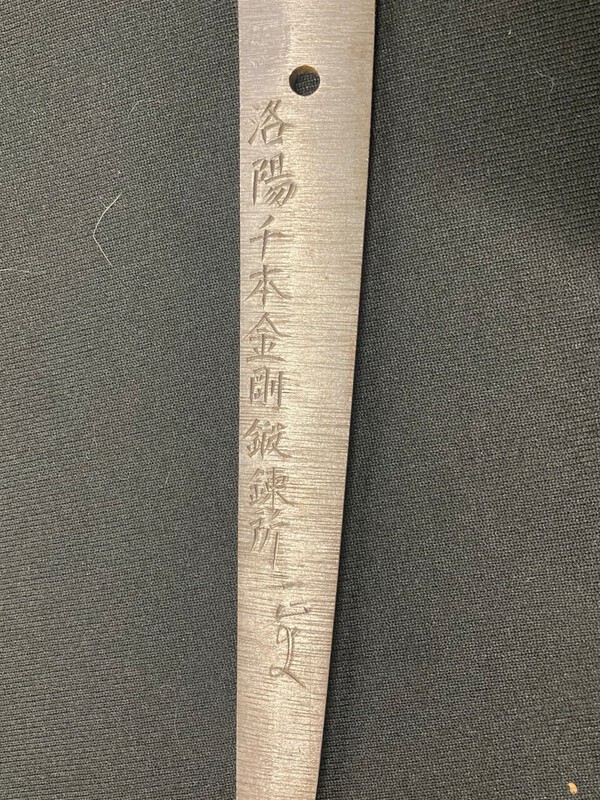
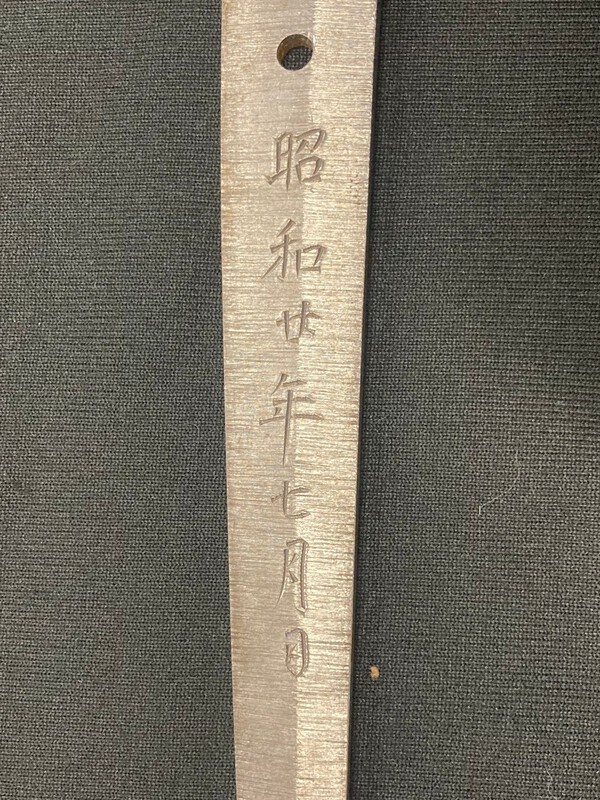

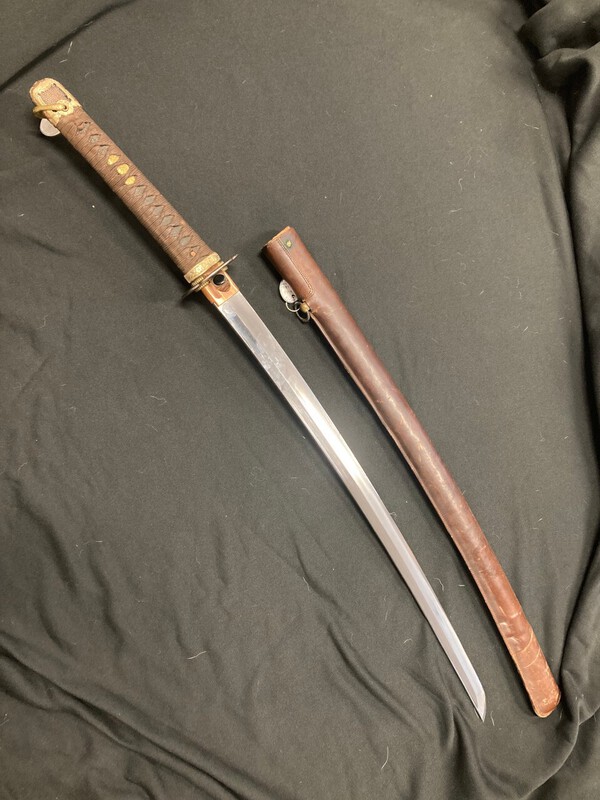
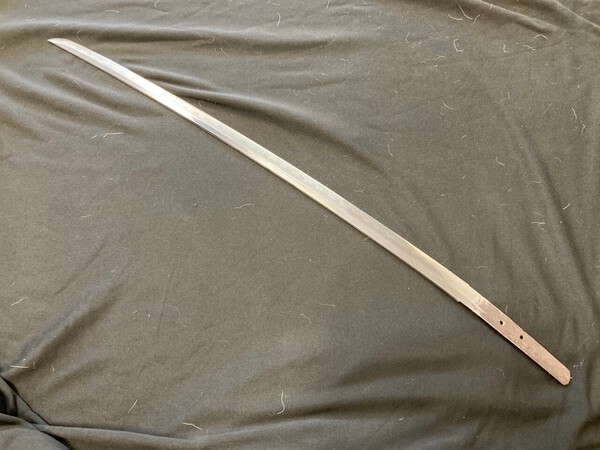
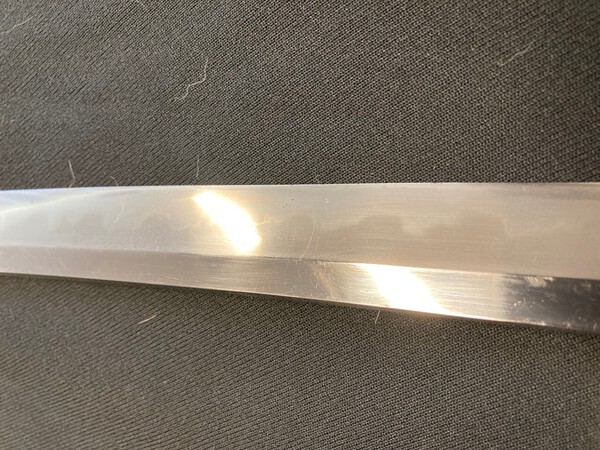
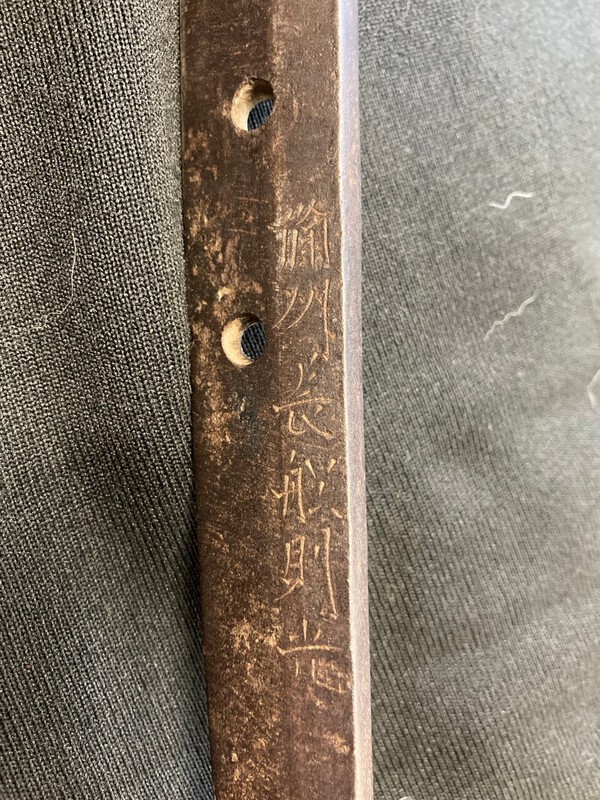
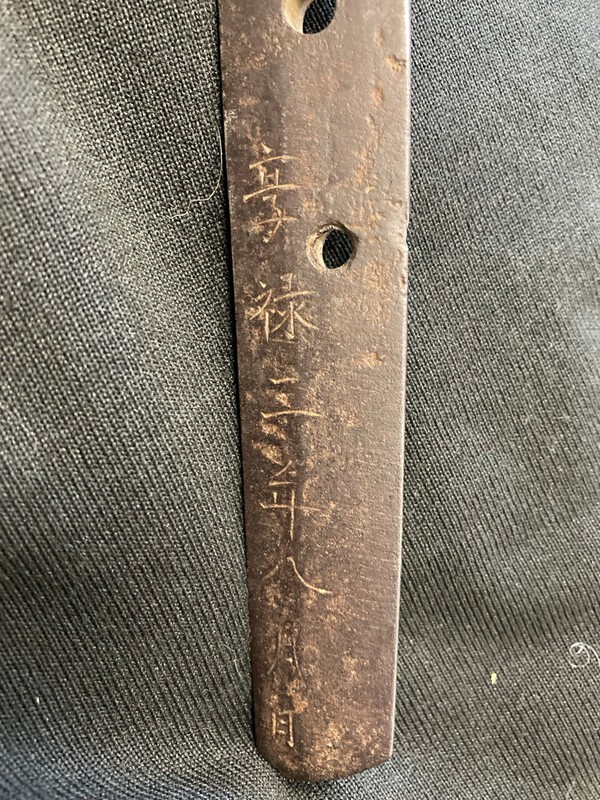
.thumb.jpg.d23430374be3fdab81cbd185002d7dd3.jpg)
